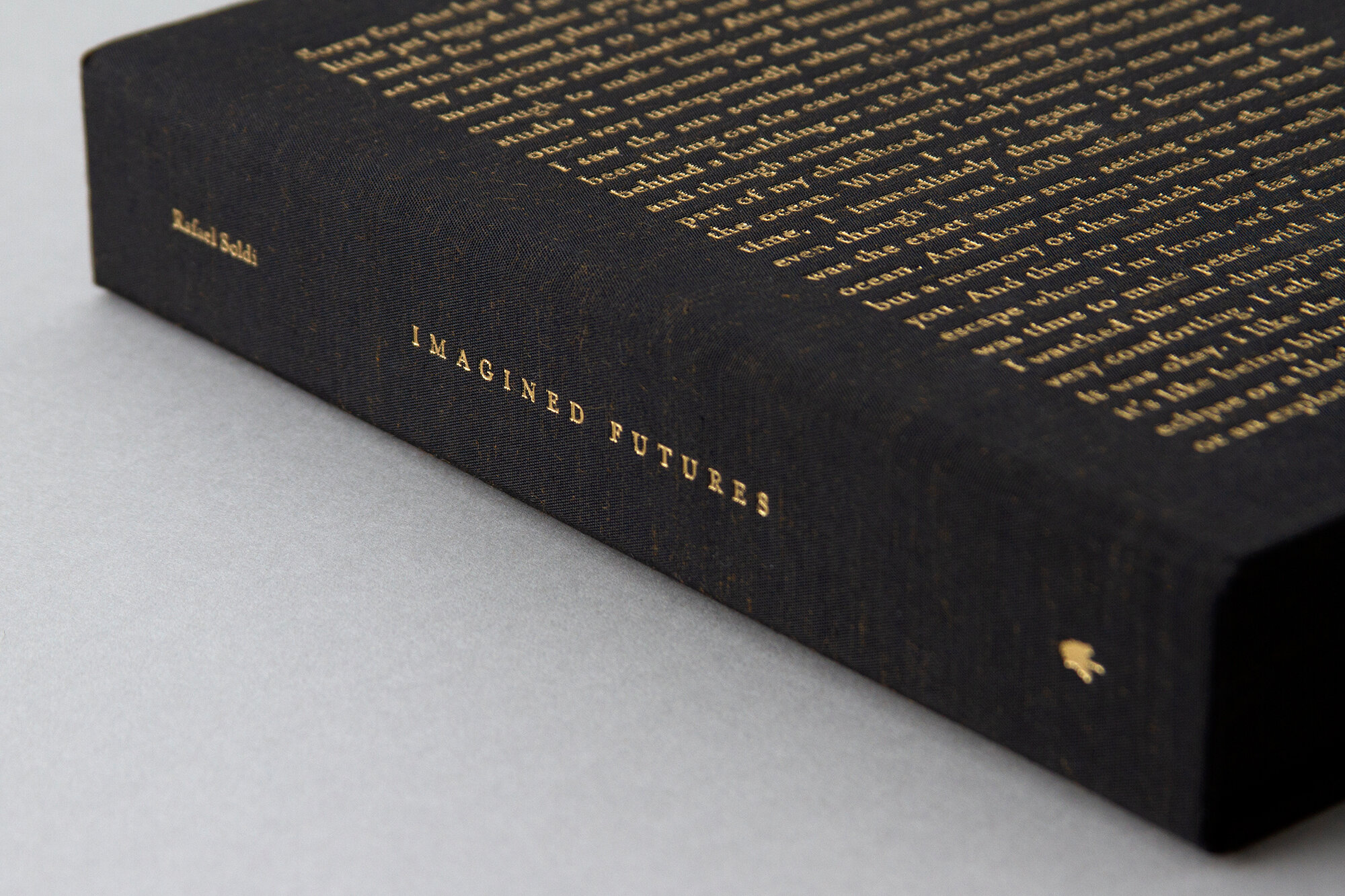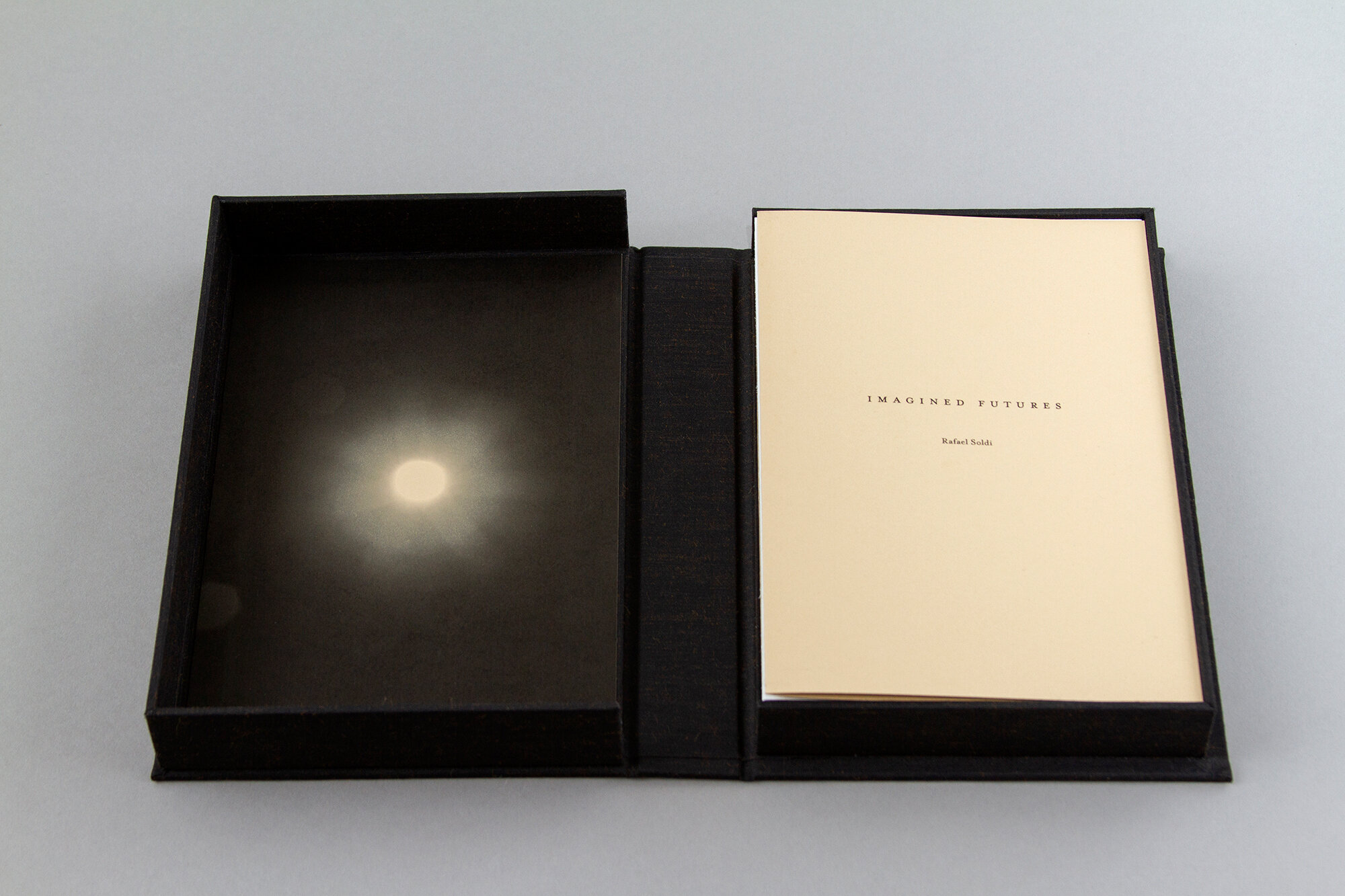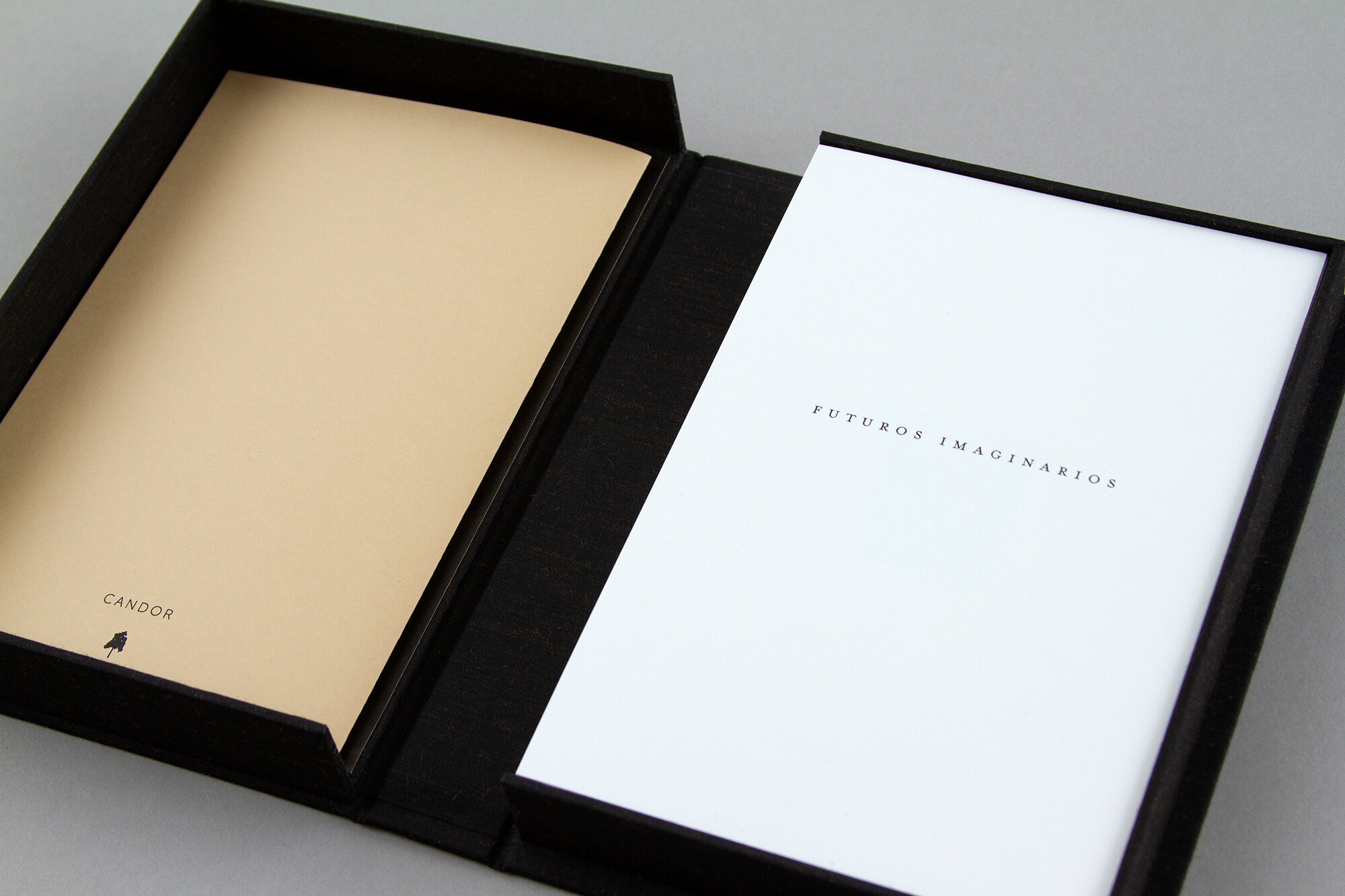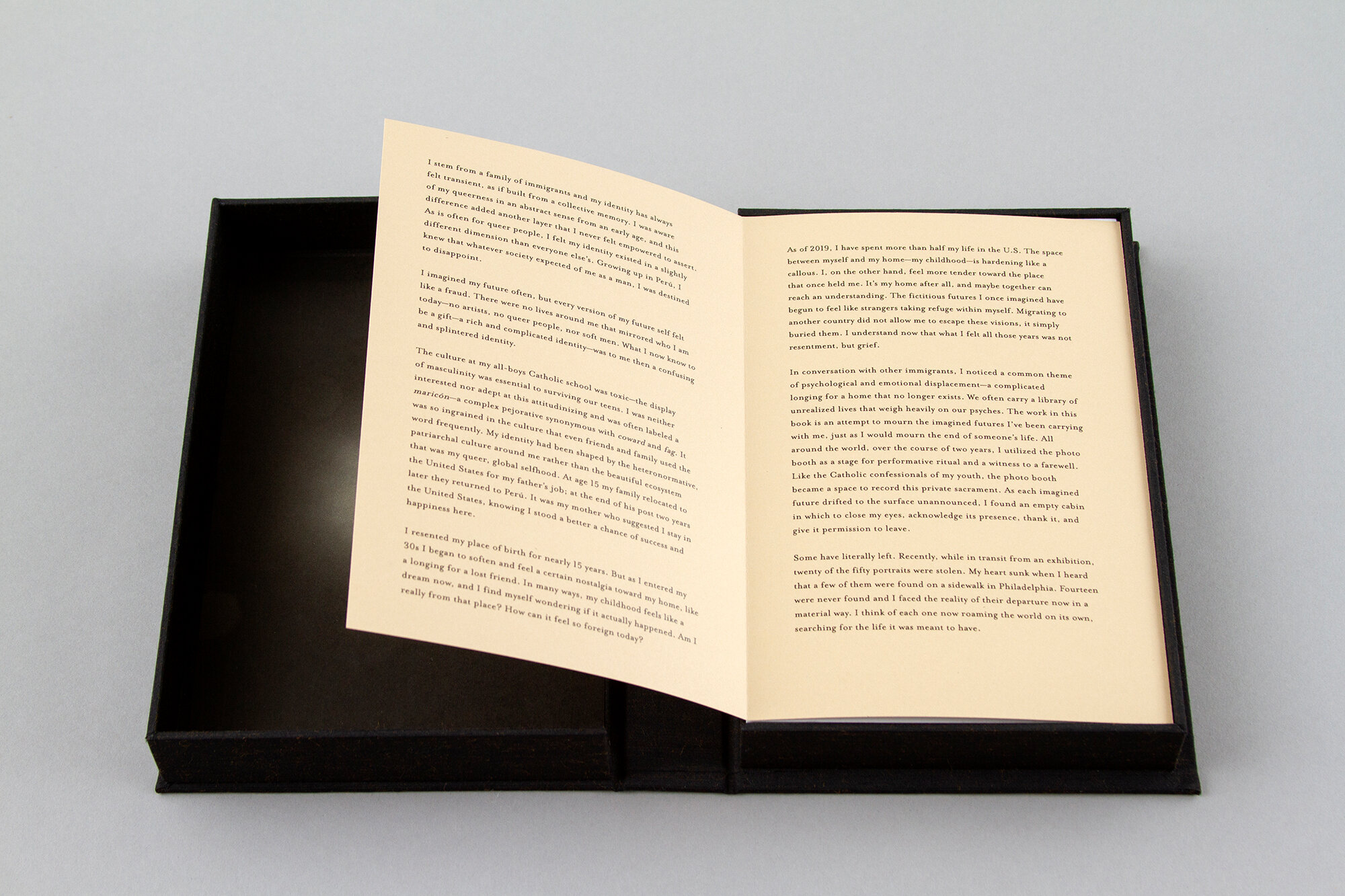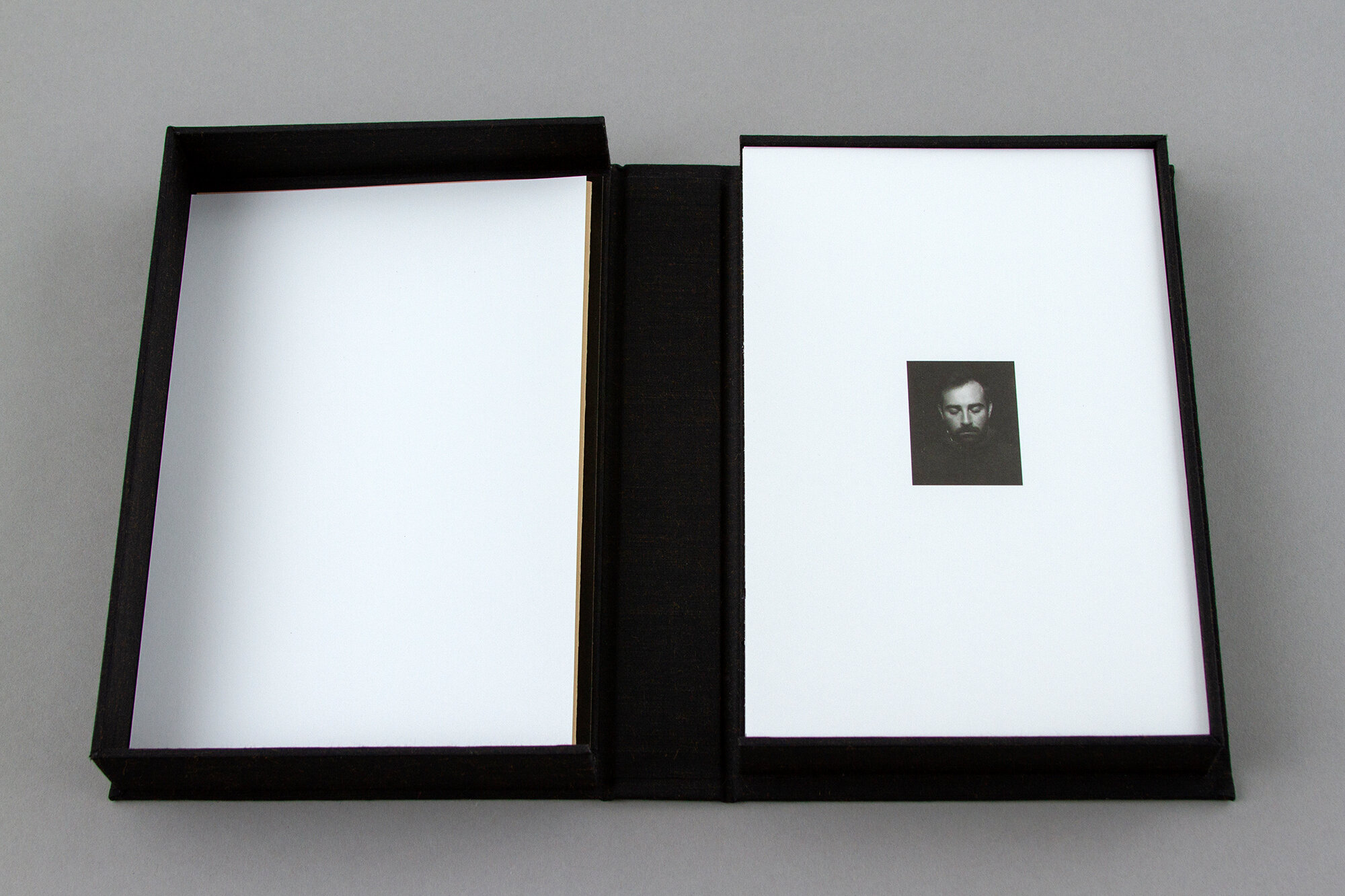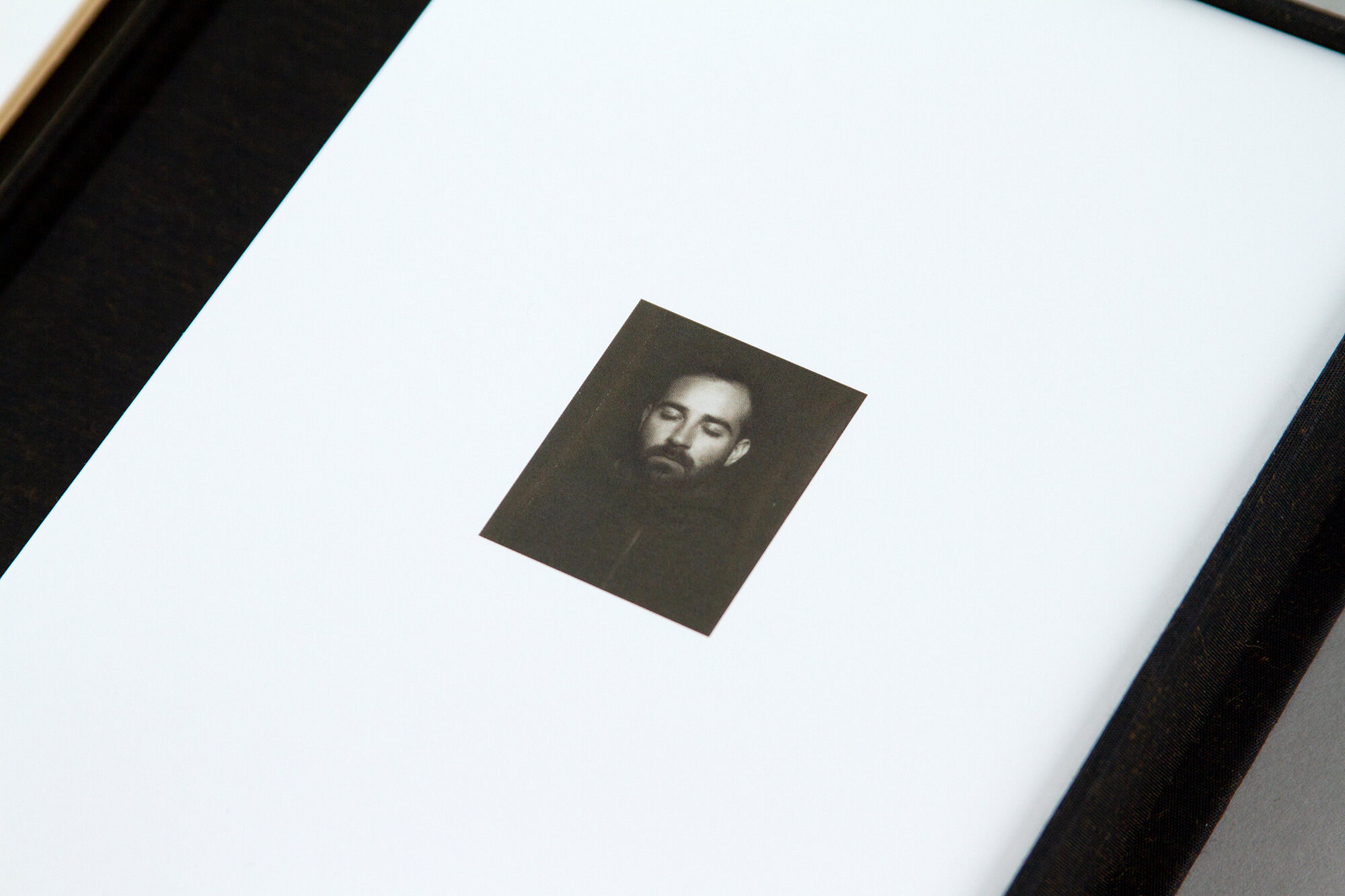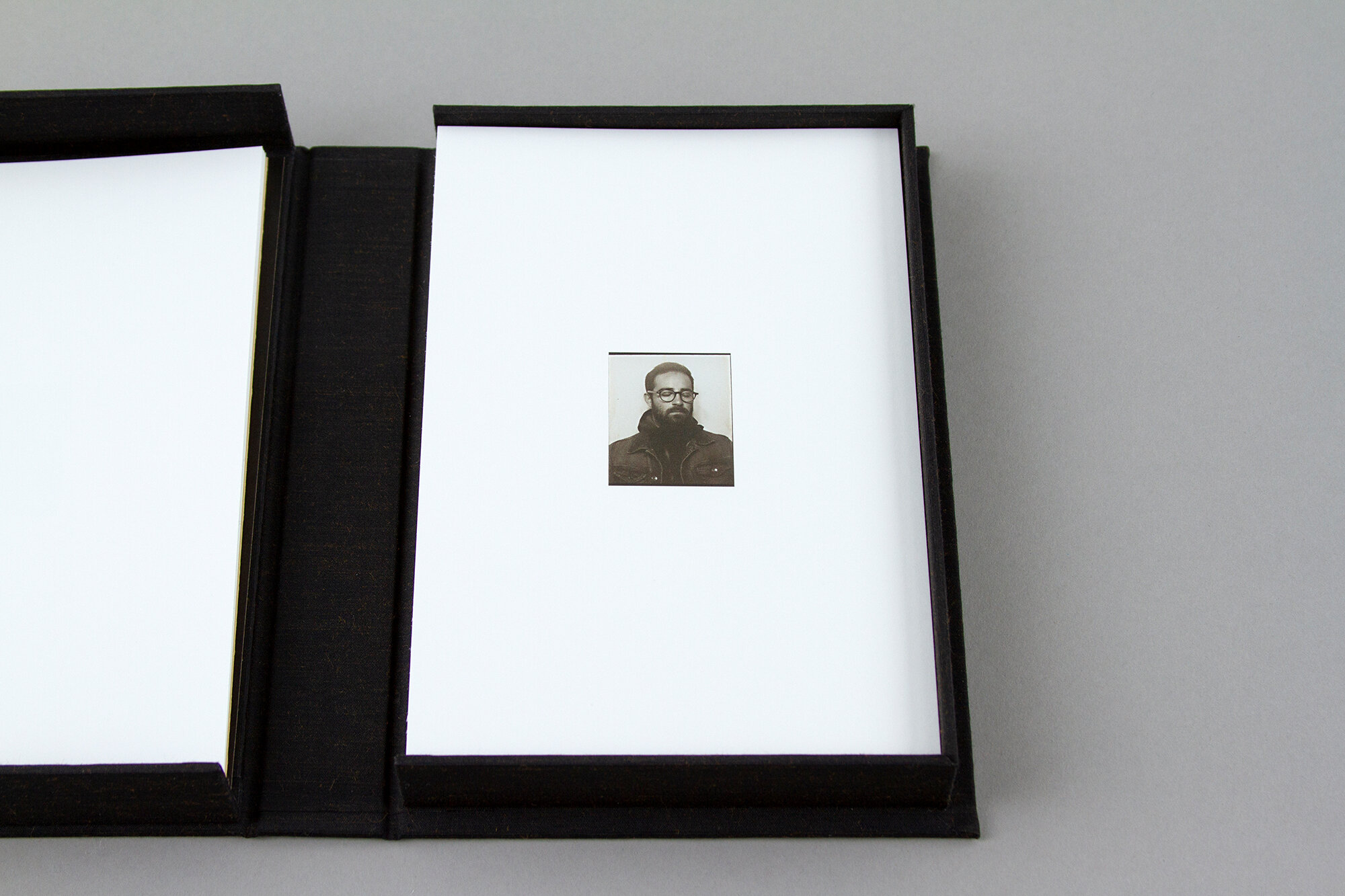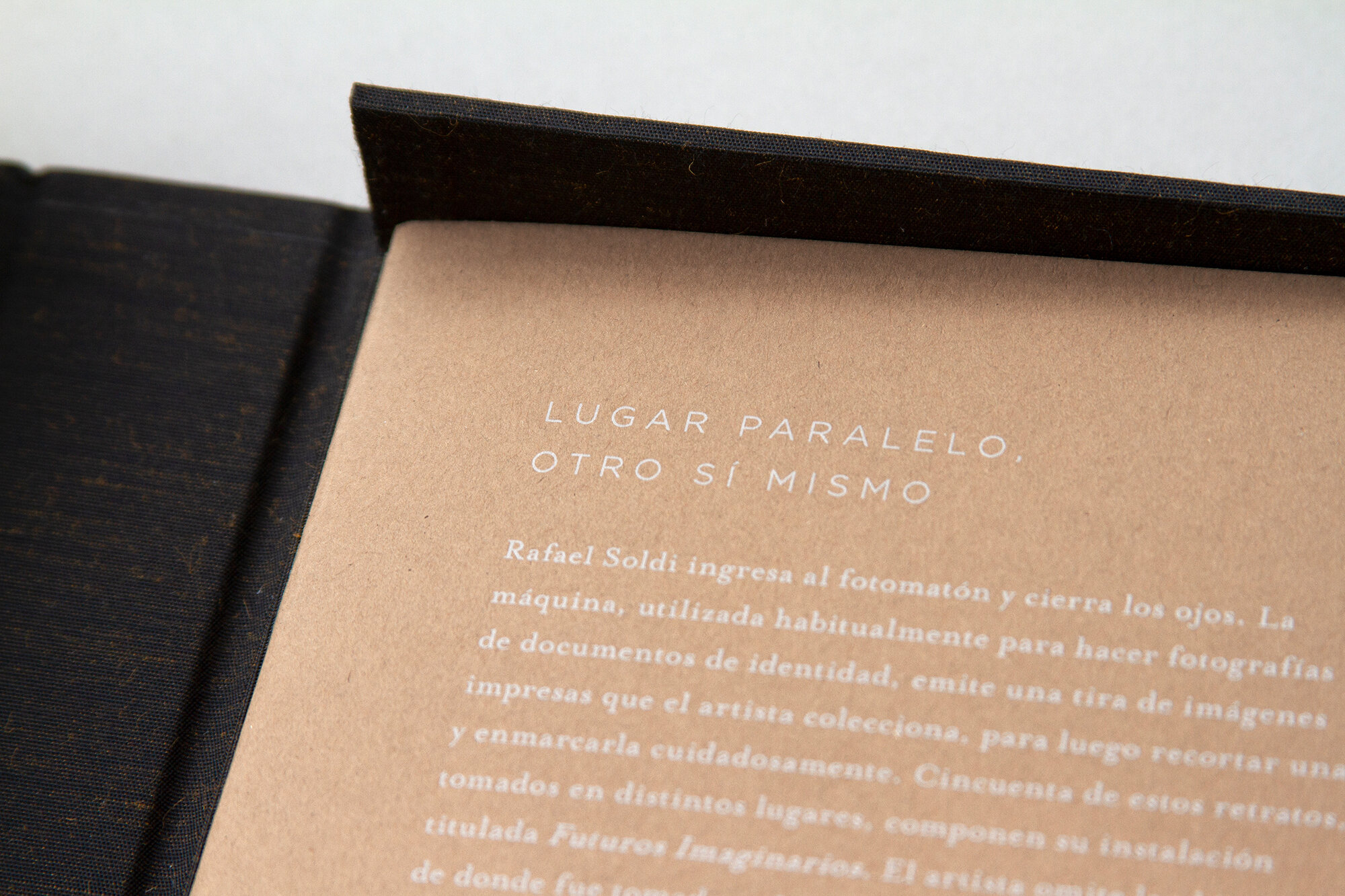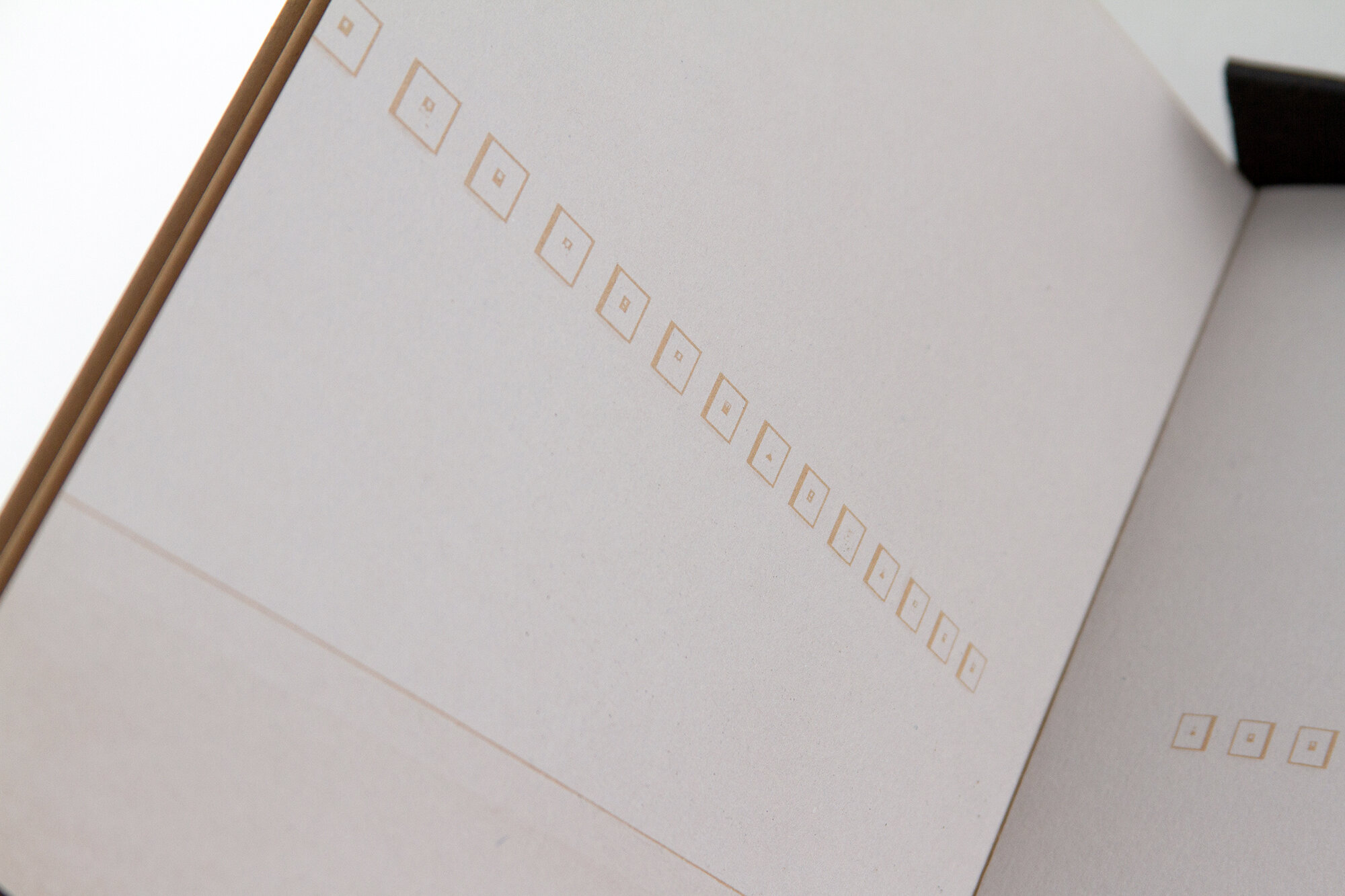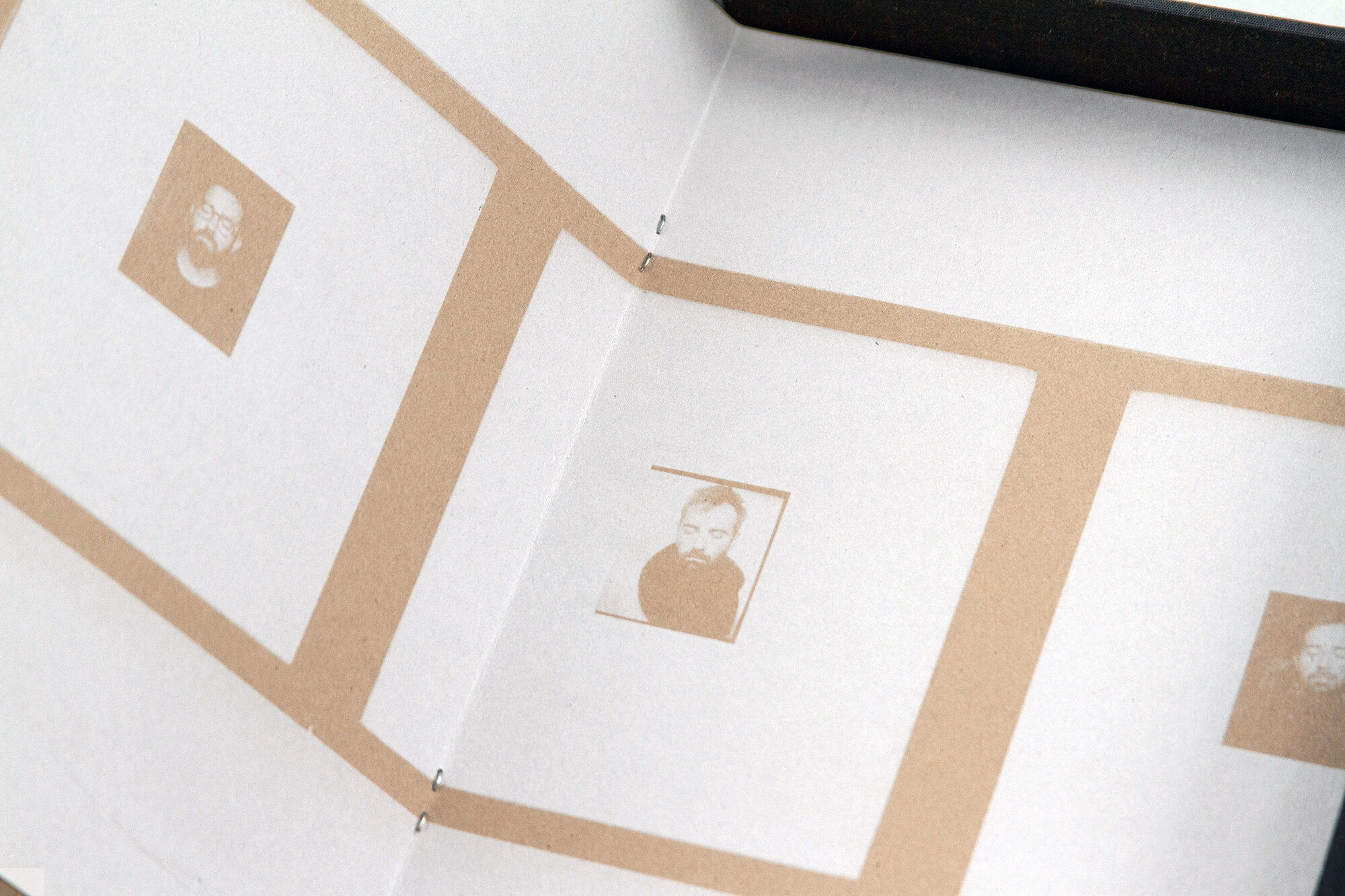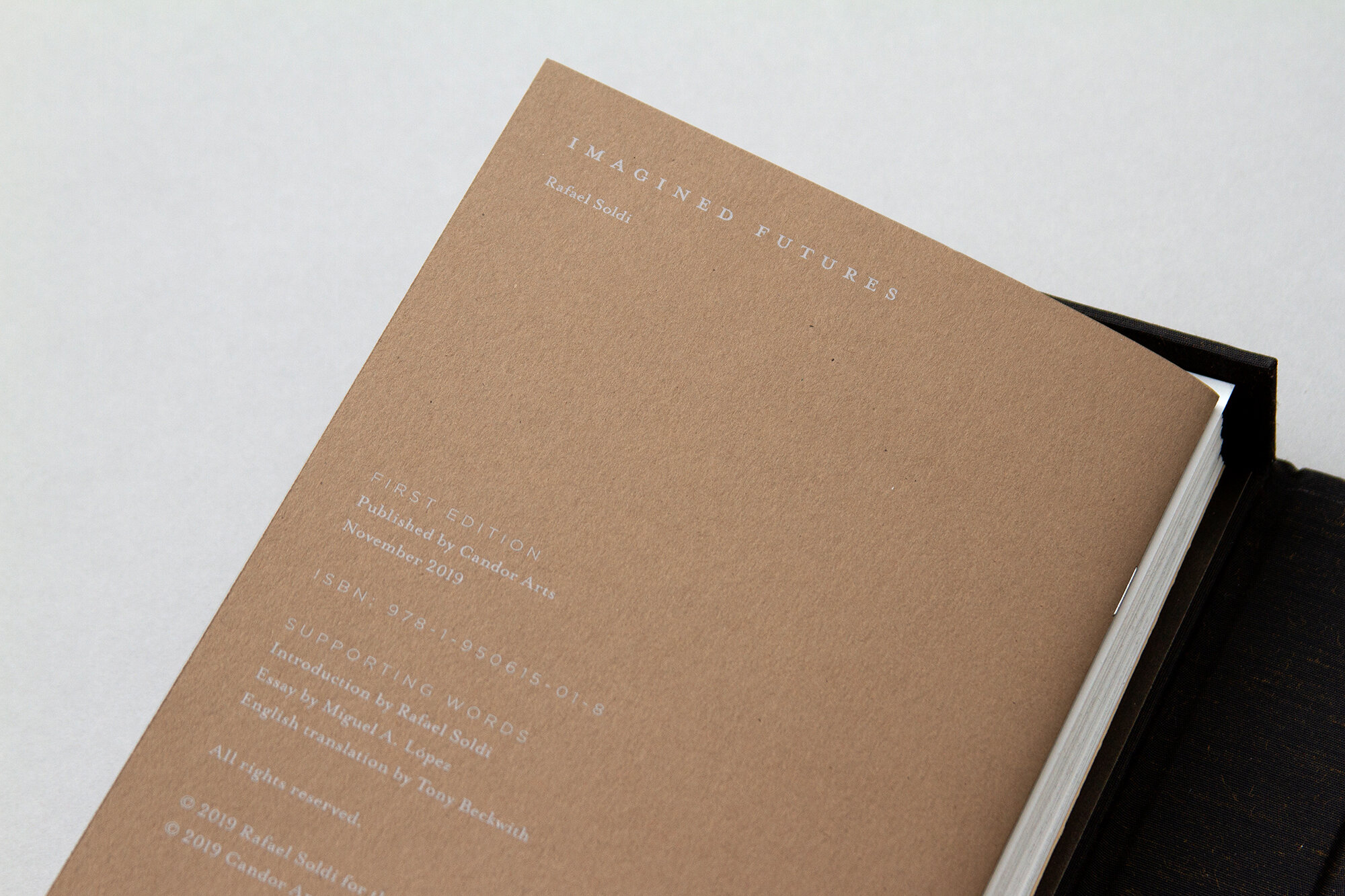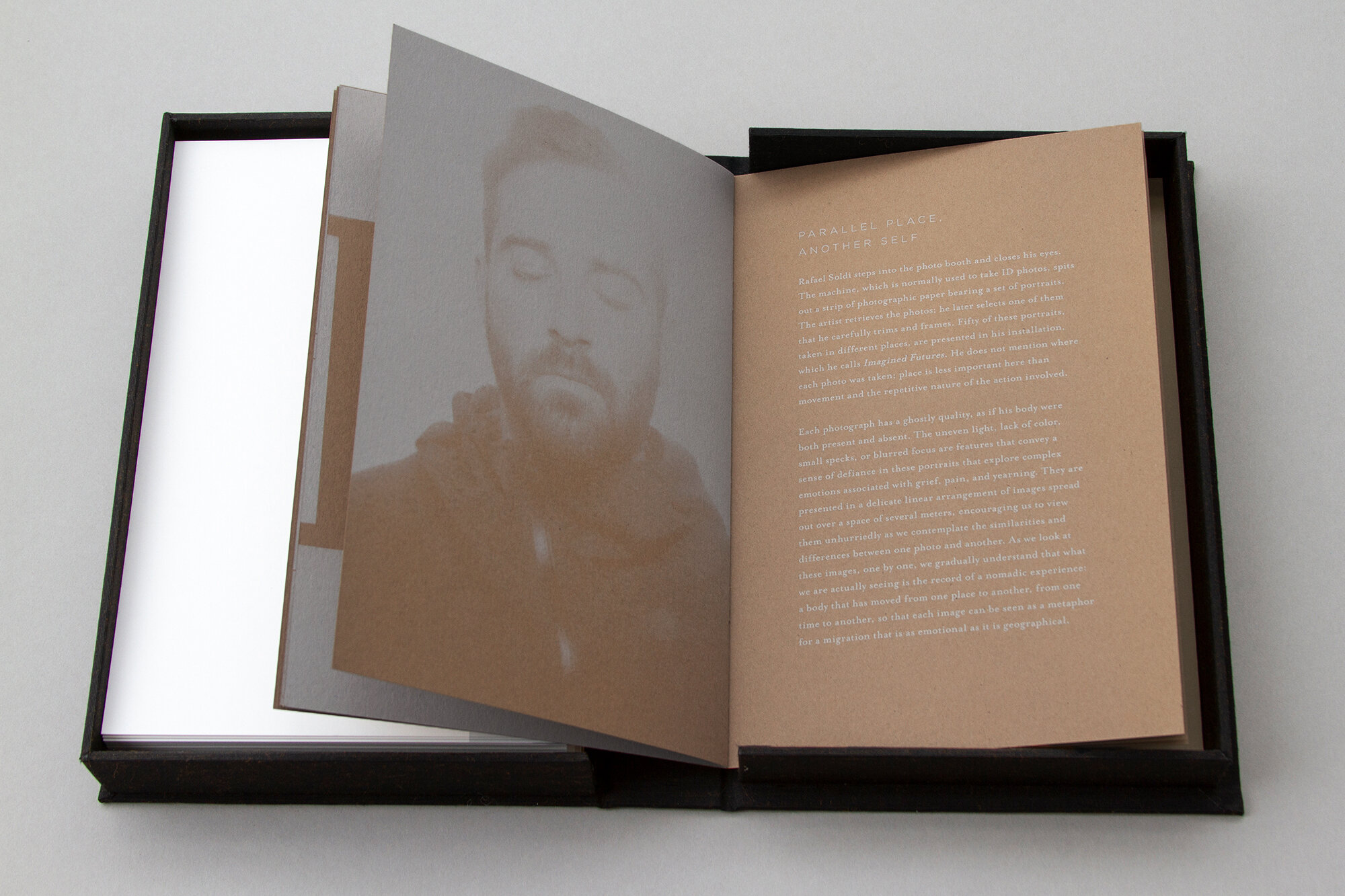Book Review: “rafael soldi: imagined futures”
By Jess T. Dugan | January 26, 2021
Published by Candor Arts in 2020
Edition of 200 signed and numbered copies / 6-5/8" x 10" x 1-3/4"
Designed by Matt Austin and Melanie Teresa Bohrer.
Foil stamped clamshell box containing a tipped in print, introduction by Rafael Soldi, a set of 50 spot-varnished prints, and a supporting booklet. Supporting essay by Miguel A. Lopez, Director & Chief Curator, TEOR/éTica, San José, Costa Rica. English translation by Tony Beckwith.
I had been waiting with excitement to receive Rafael Soldi’s book, Imagined Futures, for a long time (production was delayed due to COVID) and the small staff of Candor Arts, who were producing each book by hand, were slowly making their way through the edition. When it arrived, although I wanted to open it immediately, I knew instinctually that this was not a book one looks at quickly, flipping through its pages casually to get a sense of what is inside. Rather, this was an object that contained immense emotion and personal history, one that required intense looking and quiet contemplation. So, I waited until I could engage with it on the level that it required and deserved.
The book itself is an impeccably beautiful object; the photographs are printed on individual sheets that may be viewed in any order, rearranged and reorganized by the viewer. These sheets are housed within a handmade black box; on the cover, there is gold, foil-stamped text, taken from a text message written by Soldi, describing the origins of the project and referencing an image on the inside cover of a white sphere inside a black expanse. The final line of this text reads:
I like the ambiguity of this image too… it’s like being blinded by the sun, or it could be an eclipse or black hole or a camera shutter or a moon or an explosion or a flashing memory or a peephole.
I began by reading Soldi’s introductory text, in which he writes about growing up in Peru without any road maps, or role models, for the life he would eventually lead:
As is often for queer people, I felt my identity existed in a slightly different dimension than everyone else’s. Growing up in Peru, I knew that whatever society expected of me as a man, I was destined to disappoint. I imagined my future often, but every version of my future self felt like a fraud. There were no lives around me that mirrored who I am today—no artists, no queer people, nor soft men. What I know now to be a gift—a rich and complicated identity—was to me then a confusing and splintered identity.
Soldi immigrated to the United States at the age of 15 with his family; two years later, when his parents were set to return to Peru, his mother suggested he stay, knowing that he had a better chance of pursuing an authentic, happy life in the United States. Soldi carried resentment about his place of birth for nearly fifteen years, but as he entered his 30s, this resentment began to soften and turn into a kind of complicated nostalgia towards his home.
Over the course of two years, Soldi created the photographs in Imagined Futures in analog photo booths around the world. As he writes:
The work in this book is an attempt to mourn the imagined futures I’ve been carrying with me, just as I would mourn the end of someone’s life. All around the world, over the course of two years, I utilized the photo booth as a stage for performative ritual and a witness to a farewell. Like the Catholic confessionals of my youth, the photo booth became a space to record this private sacrament. As each imagined future drifted to the surface unannounced, I found an empty cabin in which to close my eyes, acknowledge its presence, thank it, and give it permission to leave.
As I looked through the pages of the book, I found myself thinking about these private rituals; I wondered what exactly Soldi was thinking, what kind of life he was releasing into the energetic ether. I thought about the pain of revisiting one’s past, of trying to come to terms with circumstances that were complicated and difficult. I thought of the experience of growing up in an environment where you always feel different, separate from the world that everyone else seems to move through with ease. And I felt Soldi’s grief, his private reckoning with a painful history.
The photographs themselves are rich in tone; the analog, black and white elements of the photo booths Soldi utilized provide a kind of depth, a reverence for the internal ritual taking place. They are reproduced to scale, measuring 1.5” x 2”. The specifics of the images vary; some are well lit, some are so dark as to be almost obscured; some have light leaks; some backgrounds are white, some black, some patterned; some have borders, some do not. We see changes in Soldi himself – changing facial hair and clothing of different seasons – speaking to the passage of time.
After viewing all fifty of Soldi’s private performances, I was brought to tears by a line in the essay by Miguel A. Lopez, which is included as its own pamphlet at the end of the book:
By constructing an archive of photographs of his own motionless body, Soldi not only expresses his own personal grief; he also describes a shared mourning for all that we are often forced to leave behind—a land, a family, a language—in order to keep living.
This mourning is palpable, each photograph embedded with the complex duality of grief and the eventual freedom that comes from moving through it and letting it go. The requirement of loss to continue living is a truth shared by both immigrants and queer people; Soldi embodies both of these identities, of course, doubling the impact of the loss of what he was required to leave behind. Imagined Futures is a deeply felt, personal telling of a story that resonates with all who have been required to leave something behind in order to do the most fundamental, essential thing: to keep living.
Imagined Futures is available from Candor Arts.
All images courtesy of Rafael Soldi and Candor Arts.
